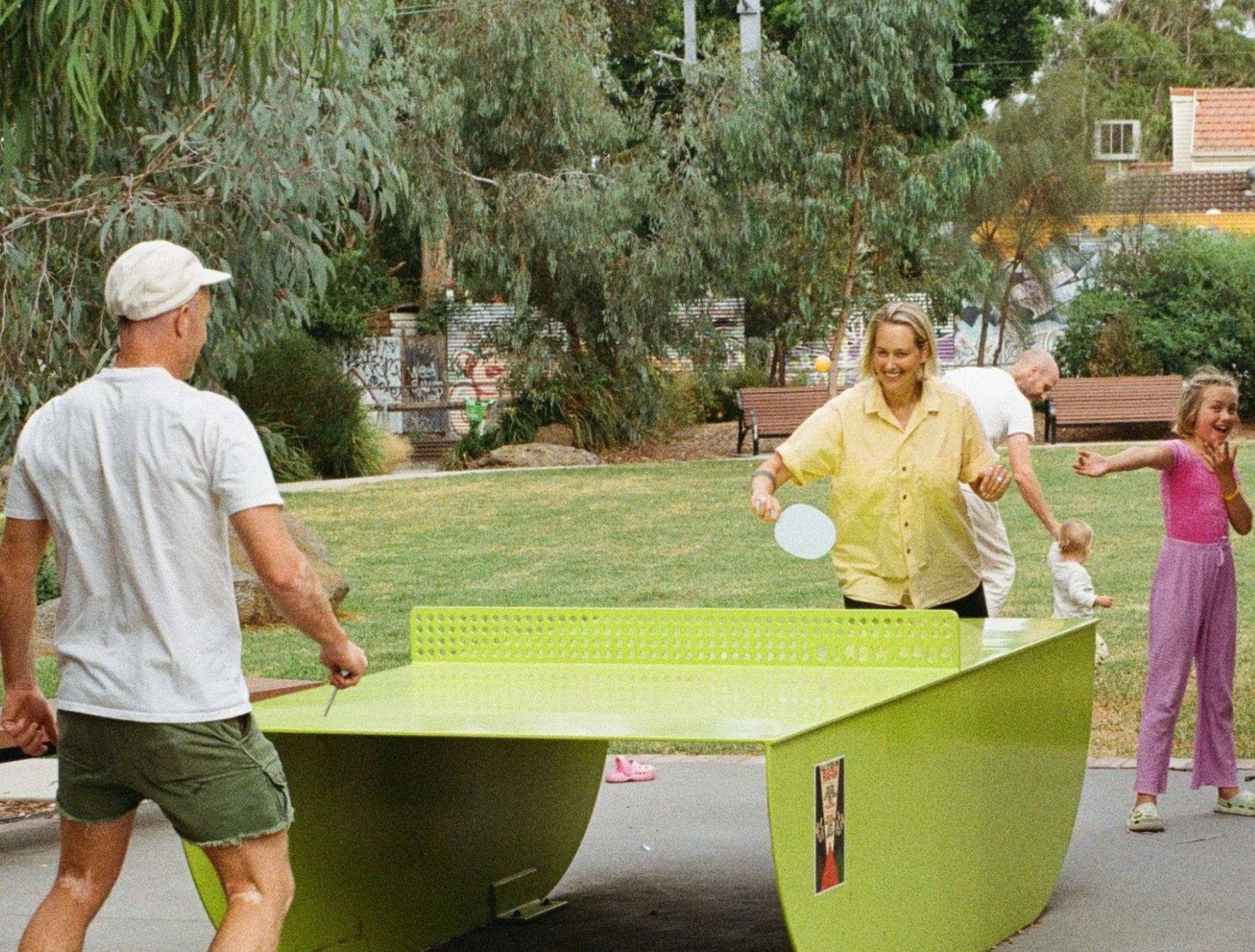The Chart-Topping Duo of Green Spaces and Social Active Play

For communities and their residents to be happy and healthy, the evidence is telling - access to green spaces is a must. When those green spaces include opportunities for active (and social) play, you have yourselves a bona fide hit.
IMAGE CREDIT ABOVE
Location: Koonoona Park, NSW
Image Credit: Troy Harradine
“Humans - even introverts - need to be around other people.”
Annie Raser-Rowland,
co-author of The Art of Frugal Hedonism
Chapter 1: Accessible Green Spaces
Being in nature is increasingly recognised as vital for children, young people and adults. Research on research (on research) shows that having access to green spaces positively contributes to the development, physical health and mental wellbeing of community members - both collectively and individually.
We start with that... but now factor in the endemic decrease in backyard sizes (not necessarily a wholesale bad thing, it must be said), the decrease in neighbourhood tree canopies (a wholesale bad thing) and the increase in apartment living in cities across the country.
What do we do? We champion, support, visit and make the most of our local tree-lined parks, our state and national forests and every green space in between! If you don't have a garden at home you can get involved in community initiatives like community gardens or Arbor Day!
|
Chapter 1 painted a glorious landscape, in green hues, of the community-supporting green space. In chapter 2, we illustrate the opportunity of pairing this with social active play.
For kids and adults, being active every day offers opportunities for learning, growth, fitness, strength and development. Covering physical, language, emotional, social and intellectual spheres, active play is the goose that keeps on giving.
And social? Because we are increasingly isolated! There is a worldwide epidemic of loneliness and we need to work out how to combat it.
'Third Spaces' are a way to do that. These are spaces between our usual social environments of home ('first spaces') and work or school ('second spaces') where people in the community can spend time without needing to spend money. Think parks, beaches, libraries, riverside waterfronts or basketball courts.
Third spaces also provide a common ground for cross generational socialisation. People of any age can cross paths in a public place with green areas and activities such as table tennis which are accessible to all ages. The benefits of this are huge for all involved - increasing inter-generational equity - and quite easily achieved once we step outside!

Location: Bina Parkland, Balga WA
Image credit: Nude Design Studio

Location: Bulleke-Bek Park, Brunswick VIC
Image credit: Nude Design Studio
We sourced our evidence from:
Planet Ark 2012, Planting Trees: Just what the doctor ordered, National Tree Day [website].
Urban Development Institute of Australia WA 2013, Small Blocks Dominate, Media release, [website].
Louv R 2005, Last Child in the Woods: Saving Our Children from Nature-Deficit Disorder, Atlantic Books.
Australian Research Alliance for Children and Youth 2009, Parks and Open Spaces: for the health and wellbeing of children and young people. Action for Young Australians Report, Australian Research Alliance for Children and Youth.
Commissioner for Children and Young People 2010, Wellbeing: Children and Young People’s Views on Wellbeing – Research report, Commissioner for Children and Young People Western Australia, pp. 47 & 91.
'Third places' are good for your wellbeing and wallet. Here is how to find yours [website].
